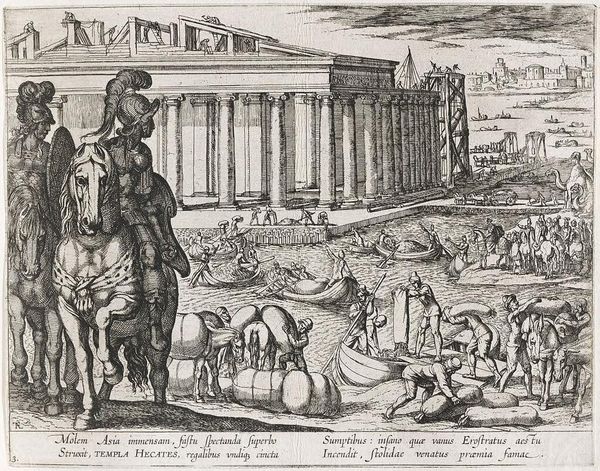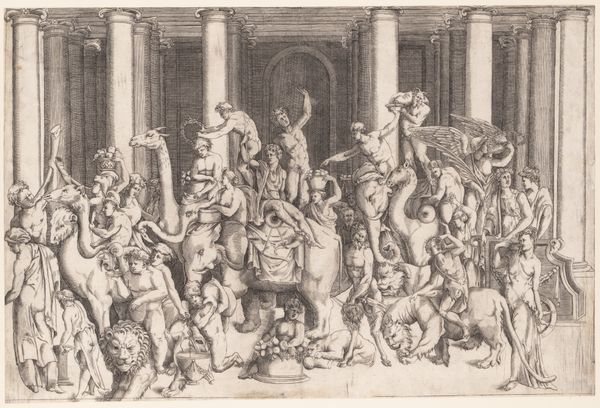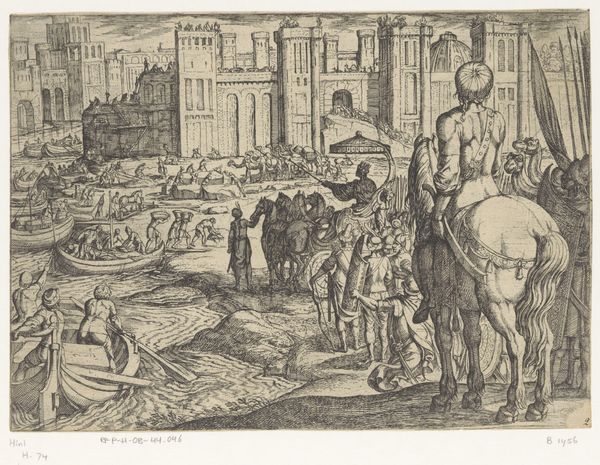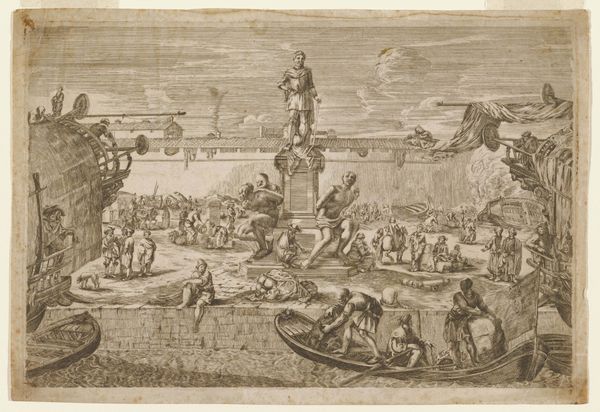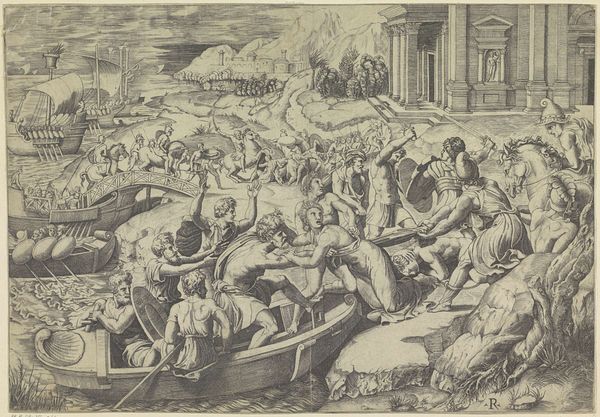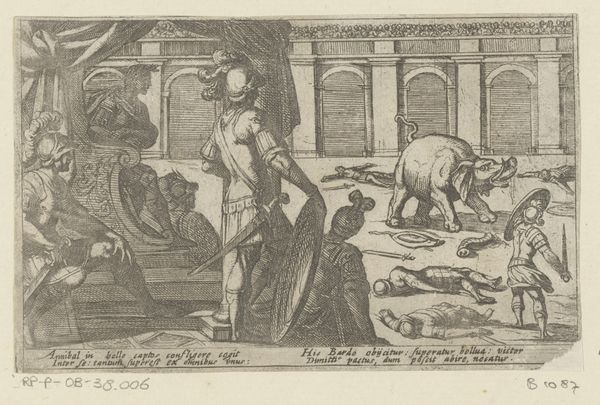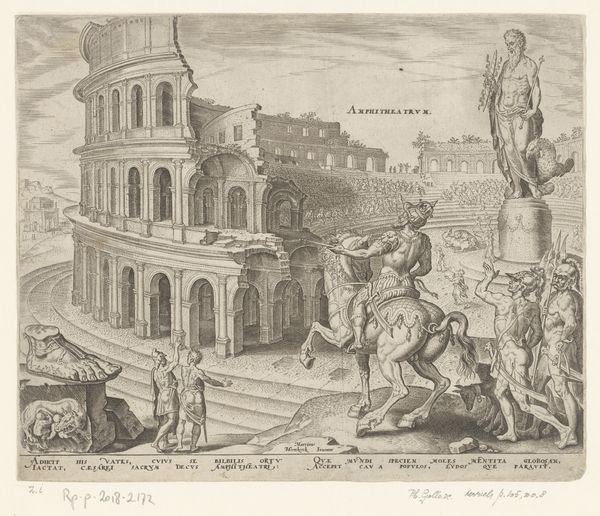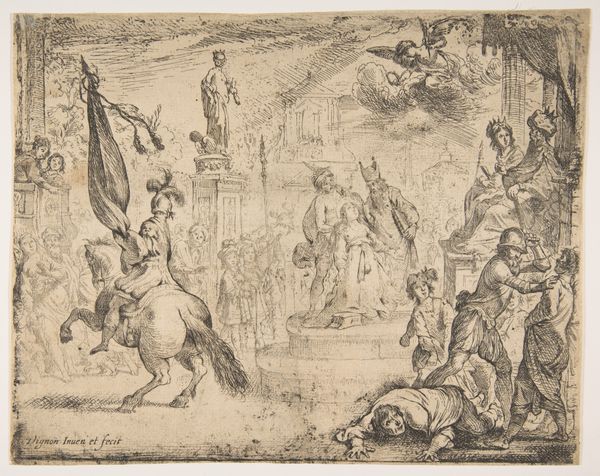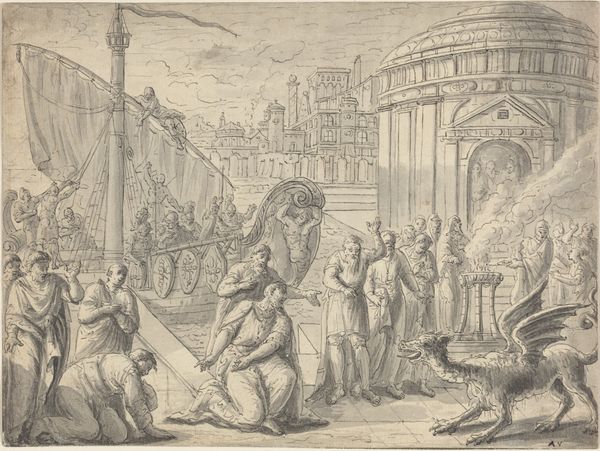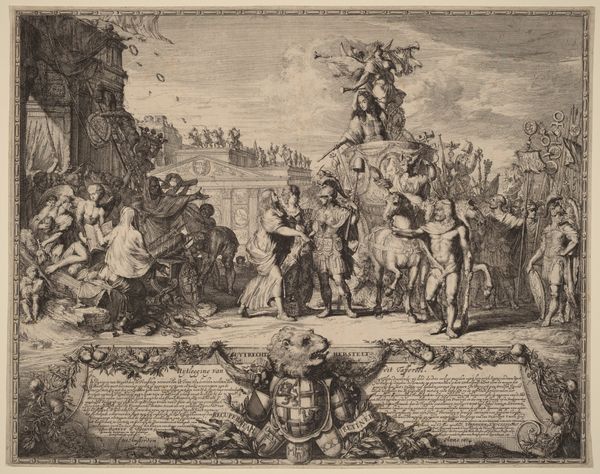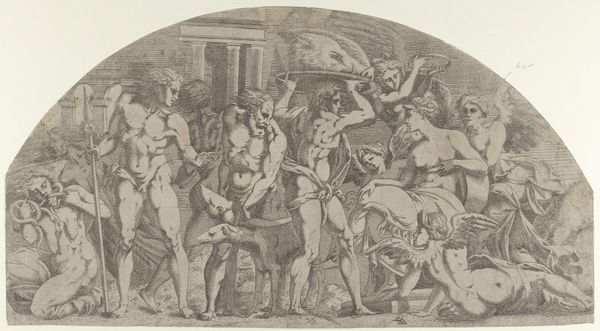
#
mechanical pen drawing
#
pen illustration
#
pen sketch
#
junji ito style
#
personal sketchbook
#
pen-ink sketch
#
pen work
#
sketchbook drawing
#
storyboard and sketchbook work
#
sketchbook art
Dimensions: height 205 mm, width 285 mm
Copyright: Rijks Museum: Open Domain
Curator: This intricate pen drawing by Antonio Tempesta depicts the Temple of Diana at Ephesus, dating back to 1608. You'll find it here at the Rijksmuseum. Editor: It feels incredibly busy. So many tiny figures swarming around a colossal architectural structure. The effect is almost overwhelming, like a miniature epic frozen in time. I am struck by the sheer amount of labor on display here. Curator: Indeed. Tempesta captures a moment rife with sociopolitical implications. Look at the figures in armor standing proudly by, juxtaposed with all the visible labor implied in the construction and transport of materials. This speaks to the cultural priorities of the time and to the political power embedded within grand architectural projects. Editor: It's fascinating to consider what that construction *entailed*. Those columns, the precisely rendered stonework—think of the quarrying, the shaping, the transport. This drawing reveals an intense network of human activity focused on the creation of this monument, with all that that network signifies socially and materially. Curator: Absolutely, the Temple of Diana was not simply a religious structure, but a symbol of civic pride, economic power, and, in this portrayal, of visible Roman dominance, effectively colonizing the imagery by having Roman figures prominently guarding this architectural treasure from afar. It's not just the depiction of the temple, but the assertion of control over it. Editor: And this image would also become a commodity of sorts. It shows a building made possible by immense amounts of materials being converted through raw labor and now is forever immortalized as something that could be infinitely printed and re-consumed in the form of a mechanical pen drawing. It makes me question what’s at play regarding Tempesta’s consumption habits of architecture, labor, and its materials and the power to depict its commodification through the lines of his pen. Curator: An interesting perspective, highlighting how the very creation and dissemination of this image participated in the dynamics of power it portrays. The labor continues! Editor: Yes, it gives me a great deal to think about. I see layers of meaning and material relationship in Tempesta's work that a simple photograph couldn’t capture. Curator: It’s these intricate details that elevate a drawing like this beyond mere historical record into a poignant commentary on society, politics and power.
Comments
No comments
Be the first to comment and join the conversation on the ultimate creative platform.
